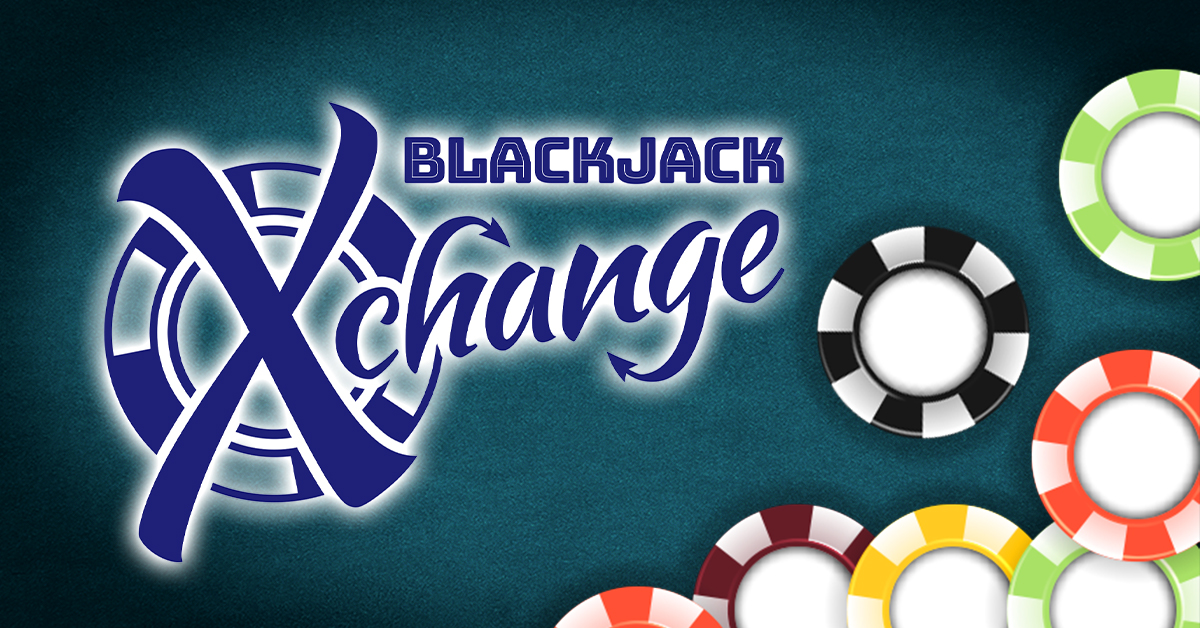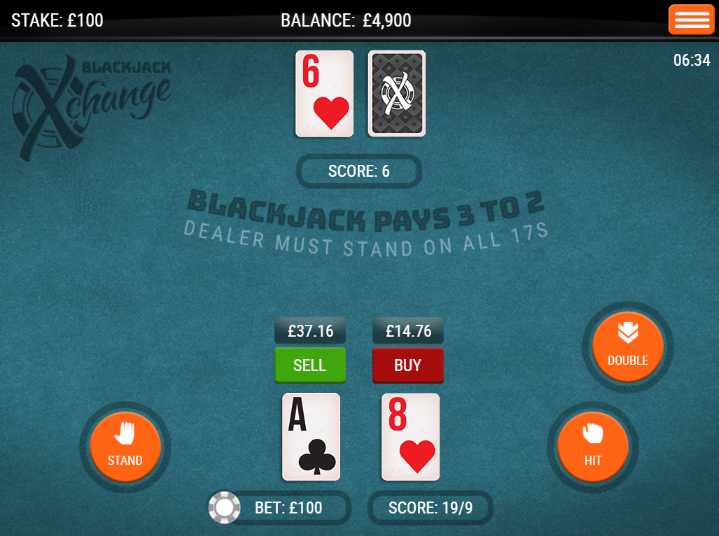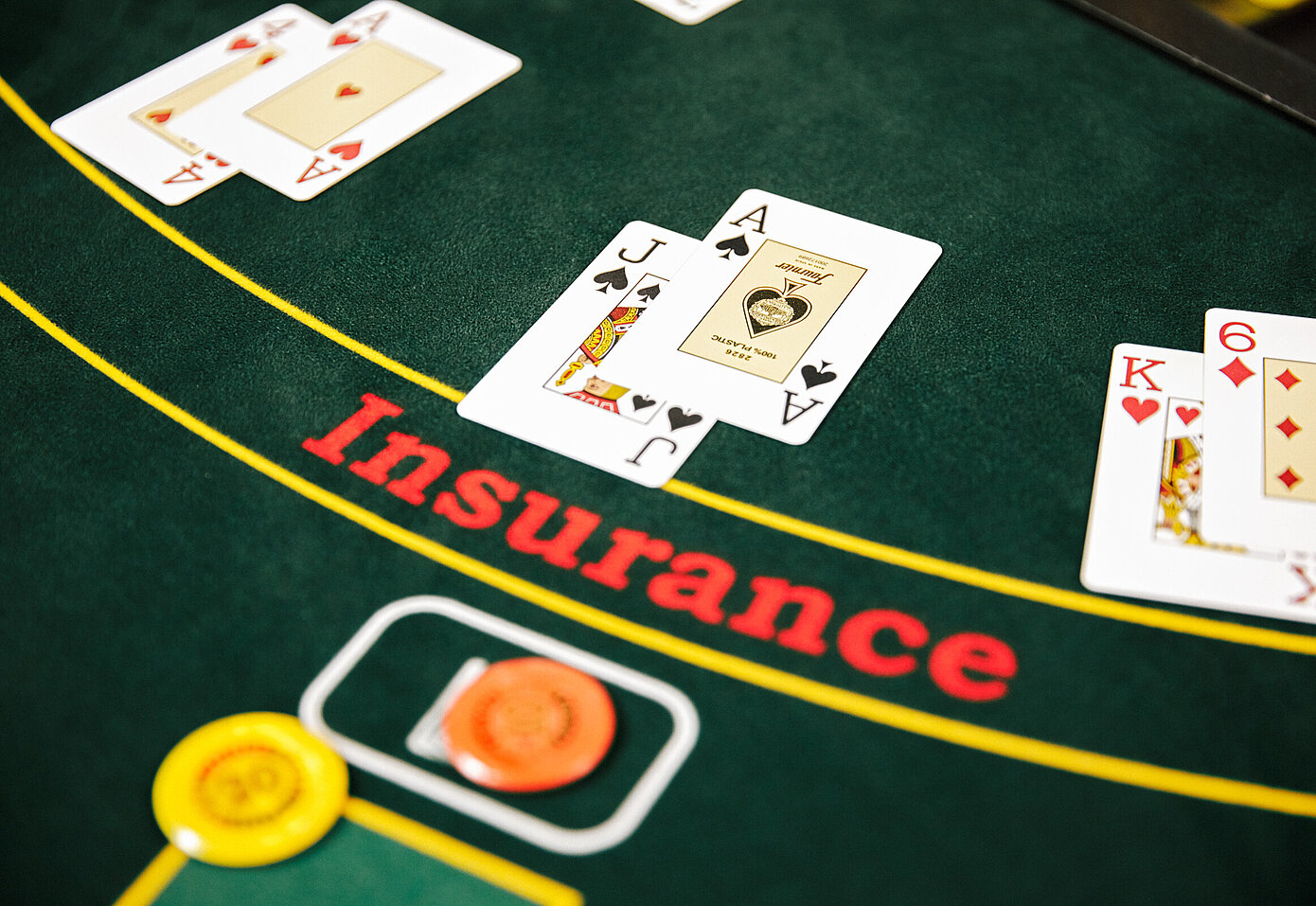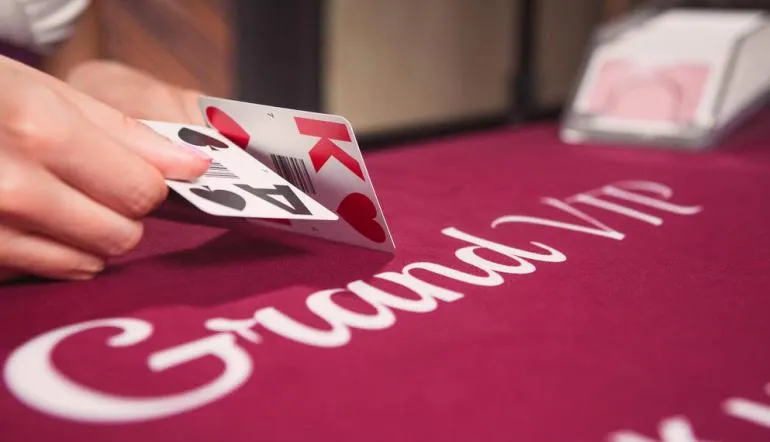Blackjack | Imagine yourself seated at a virtual blackjack table, faced with a challenging hand – perhaps a 10-5 or 9-7 combination – while the dealer flaunts a formidable 10 or even an Ace card. The traditional rules of blackjack are set aside, offering you an enticing opportunity to exchange your undesirable card for a potentially more favorable one.
This is the essence of Blackjack XChange, a novel variation of the classic game that is gradually carving out its own niche within the realm of online casinos.

The Game-Changing Feature: Card Exchange
Blackjack XChange is rife with player-attractive features, but its defining hallmark lies in the intriguing ability to exchange cards. Picture this: you find yourself holding a challenging 10-6 hand, desperately seeking an avenue to transform that seemingly unlucky 16 into a winning powerhouse, possibly even achieving the elusive blackjack and its coveted 3-2 payout.
Unveiling the Exchange Dynamics
The exchange dynamics of Blackjack XChange add an exhilarating layer to the traditional blackjack experience. How much would you be willing to pay to swap out a lackluster card for a potentially game-changing one? The cost of this exchange varies depending on the cards in play and the calculated odds of securing a victorious hand. Each hand presents a unique proposition, enhancing the strategic depth of the game.
Strategic Online Advantage

The online gaming landscape is ideally suited for the implementation of the XChange feature. In the virtual realm, game programming can instantaneously display exchange prices, allowing for smooth gameplay without disrupting the flow. In contrast, live casino settings might struggle to maintain pace while dealers quote prices for each potential card exchange.
A Glimpse into Gameplay
Let’s delve into a hypothetical scenario: You’re in an online Blackjack XChange game with a fictional $3 wager on the line. Your hand consists of an Ace-2 combination, and the dealer showcases a commanding 10. Alongside the standard options of hitting, standing, or doubling down, you’re presented with a choice – would you buy a replacement for the 2 at a cost of $1.64 or sell the Ace for 40 cents and draw another card?
Alternatively, you’re dealt a King-4 hand against the dealer’s King. Your options expand to include hitting, standing, doubling down, purchasing a new card to replace the 4 for $1.64, or selling the King for 55 cents.
<Blackjack Tips – Experts Guide You Through Blackjack Strategies>
Exchange Options Abound
The exchange possibilities extend beyond hands involving just two cards. For instance, after hitting King-4 against a King and drawing a 2, the interface presents intriguing choices: paying 62 cents to exchange the King, 49 cents to replace the 4, or a mere 23 cents to swap out the 2.
It’s essential to note that the prices for these exchanges are deducted from your credit meter and do not impact your initial wager. For instance, if you bet $3 and spend $1.64 on a card exchange, your original $3 bet remains unaffected.
Navigating the Game: Rules and Edge

Blackjack XChange boasts a collection of player-friendly rules that distinguish it from traditional blackjack variants:
- The dealer takes a stand on all 17s, including the softer variant.
- Payouts for blackjacks remain at an enticing 3-2 ratio, even after card exchanges.
- The electronic dealer promptly checks for blackjacks, with play halting upon detection.
- Doubling down on the initial two cards, even after splitting pairs, is allowed.
- Pairs may be split only once, yielding a total of two separate hands.
- Following the split of Aces, players can opt to hit or double down, an advantage not commonly found in standard blackjack games.
Strategic Insights and Considerations
While card counters might find their expertise less effective in the online realm, basic strategy players have a lot to gain from the rules of Blackjack XChange. Nevertheless, Michael Shackelford, renowned for his insightful analyses, approximates that the costs associated with card exchanges amount to a range between 2.5% and 3%. As such, he suggests that players resist the allure of XChange and stick to basic strategy principles to optimize their chances.
<Blackjack Tips – Pro Strategies for the Best Side Bets>
Optimal Play: A Glimpse into Blackjack Strategy

For those keen on maximizing their odds within the framework of Blackjack XChange, adhering to the following strategic guidelines is recommended:
Blackjack Xchange – Hard Hands:
- Hard 4 through 8: Always opt to hit.
- Hard 9: Double down when facing 3 through 6; otherwise, choose to hit.
- Hard 10: Double down when confronting 2 through 9; opt to hit against 10 or Ace.
- Hard 11: Double down when facing 2 through 10; choose to hit against an Ace.
- Hard 12: Opt to stand against 4, 5, or 6; hit otherwise.
- Hard 13 through 16: Stand against 2 through 6; opt to hit against 7 or higher.
- Hard 17 through 21: Always choose to stand.
Blackjack Xchange – Soft Hands:
- Soft 12 (Ace-Ace): Refer to the pair-splitting section.
- Soft 13: Double down against 6; otherwise, opt to hit.
- Soft 14 and 15: Double down against 5 or 6; choose to hit otherwise.
- Soft 16: Double down against 4, 5, or 6; opt to hit otherwise.
- Soft 17: Double down against 3, 4, 5, or 6; choose to hit otherwise.
- Soft 18: Double down against 3, 4, 5, or 6; opt to stand against 2, 7, or 8; hit against 9, 10, or Ace.
- Soft 19 through 21: Always choose to stand.
Blackjack Xchange – Pairs:
- 2, 2 or 3, 3: Opt to split against 2 through 7; choose to hit against 8 or higher.
- 4, 4: Opt to split against 5 or 6; choose to hit otherwise.
- 5, 5: Never split; treat this as a 10 and double down against 2 through 9, and hit against 10 or Ace.
- 6, 6: Opt to split against 2 through 6; choose to hit against 7 or higher.
- 7, 7: Opt to split against 2 through 7; choose to hit against 8 or higher.
- 8, 8: Always choose to split.
- 9, 9: Choose to stand against 7, 10, or Ace; opt to split against other cards.
- 10, 10: Always choose to stand.
- Ace, Ace: Always choose to split.
An Insight into the Intrigue of Blackjack XChange

Ultimately, the allure of Blackjack XChange lies in its novel and enticing card exchange feature. Players are enticed by the prospect of improving their hands through strategic card swaps, injecting a fresh layer of excitement into the game.
Keeping a Balanced Perspective
While the temptation to engage in frequent card exchanges may be strong, players should bear in mind that each exchange comes at a cost. The prices associated with XChange are deliberately set higher than the true odds of winning, subtly tilting the odds in favor of the house. It’s also important to acknowledge that card exchanges do not influence the probability of drawing specific cards in subsequent exchanges; the deck remains infinite, ensuring that the proportions of each card type remain consistent.
As you explore the intriguing world of Blackjack XChange, remember to weigh the benefits of card exchanges against their associated costs. By strategically selecting your exchange opportunities and making informed decisions, you can strike a balance between entertainment and optimal play within this innovative casino game.



